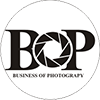
Recently I shot my first short film with the help of a couple of friends and while in post-production, I noticed I needed additional footage but what I wanted couldn’t be achieved natively on my DSLR (I was aiming for a super 8mm look from the early 90s) so I grabbed my mobile phone and downloaded a super 16 simulator and coupled with the high resolution that my phone shot, I was able to blend both sets of footage in post seamlessly.
There’s no doubt on big productions, the best cameras will always be the go-to because you want maximum quality render but if you’re an upcoming content creator with a next to $0 budget, the best gear to bring your ideas to life is that piece of equipment sitting in your bag or shelf or inside your pocket. Focus on the story rather than gear and people will definitely resonate with what you’re doing. Its been proven over and over that people will it and watch something that isn’t professionally shot as opposed to a beautifully shot sequence that tells no logical tale (watch Christopher Nolan’s Following to see a perfect example of this).
It’s important to always remember that the gear is the tool that helps bring the idea to life. You can still create incredible sequences with the simplest of equipment. Prioritise the story over the gear and all will fall in place.








